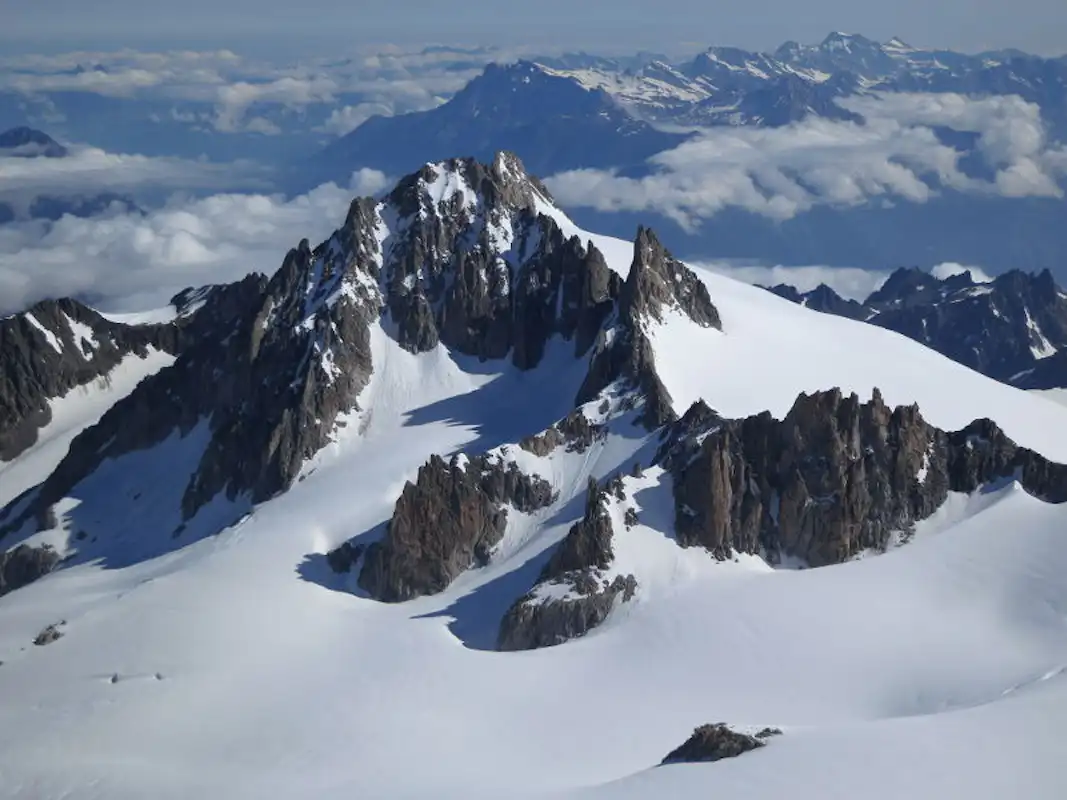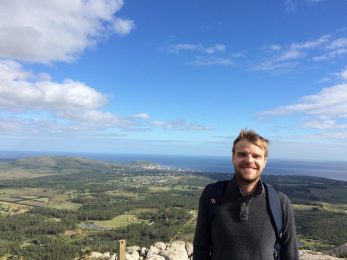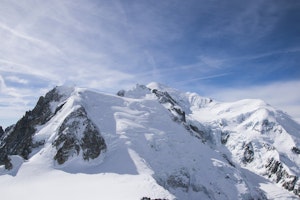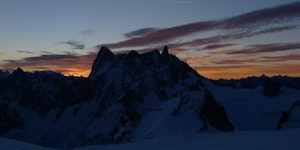Rising to 3.540 meters above sea level and sitting on the northern end of the Mont Blanc Massif, the Aiguille du Tour has become an incredibly popular location for novice mountaineers looking to get some alpine experience.
Straddling the Swiss and French border, this peak is easily accessed from Chamonix and, partially as a result, is often used as a warm up climb for Mont Blanc or other peaks in the range.
The mountain’s name in French translates to “tower needle”, which is exactly what happens at the end, as you finish your expedition with a scramble to the top of a rocky spire.
From the top of that final spire on Aiguille du Tour, you can see many mountains on the rest of the massif, including Mont Blanc. You also get stunning vistas of some of the Swiss Alps’ among other great views.
Before you book your next trip here to discover this peak for yourself, here is some practical information to prepare you for your climb!
Climbing routes & starting point
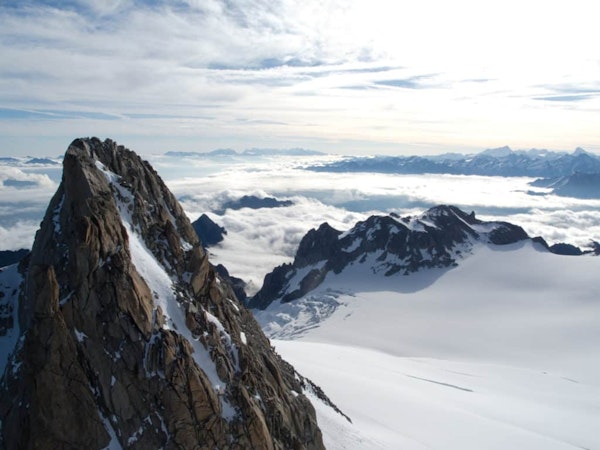
There are two main routes used by climbers to reach the summit of Aiguille du Tour: one route from the French side and another from the Swiss side.
Both routes are, technically, not very difficult and appropriate for novice climbers. Both routes involve hiking over the glaciers that envelopes the top of the mountain before finally scrambling to the summit at the end.
The Swiss route begins from a bit higher up and tends to take a little less time to complete, though only by about an hour or less. There are two options on the Swiss side and the difference between them is also about an hour of hiking. The most popular starting point is the the Cabane du Trient, which is located at 3.170 meters. The other is the Cabane d'Orny at 2.831 meters.
From the French side all ascents begin from the refuge Albert Premier at 2.702 meters. Regardless of which side you decide to climb, most guides will recommend meeting up in Chamonix beforehand to go over a few things before setting out on the trip.
Distance & duration of the ascent
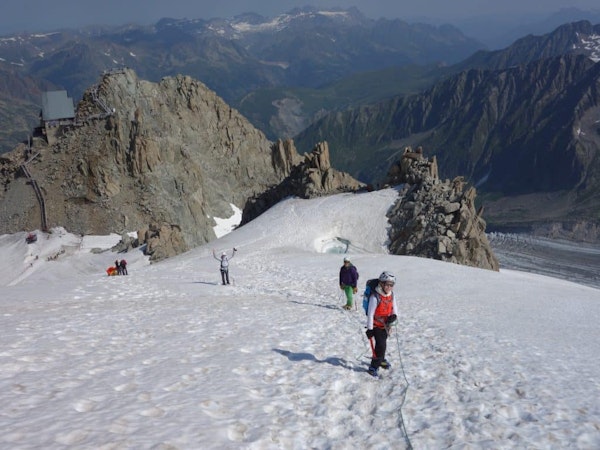
Regardless of the side from which you start, both ascents are more or less the same distance and duration.
From the French side you gain about 840 meters of elevation. The trek begins by following a path that runs parallel to the glacier, traveling through both large and small cairns, which is not difficult but may be a bit arduous.
As you go, you will eventually drop down onto the Tour Glacier and head up its right bank, passing the Signal Reilly, and ending up at the base of the Col du Tour. From here you climb up to the Col Supérieur du Tour to the plateau that sits under the aiguilles.
Many guides pass under the Aiguille Purtscheller in order to avoid crevasses as you go. This is also the step where some guides will take some time to climb either of the other two summits on the Aiguille du Tour.
Finally, you will cross the bergschrund toward the long ledge of the north ridge and finish the ascent with a brief scramble to the top.
The Swiss route differs only in how it begins. Prior to arriving at the Col du Tour, you hike up from the Cabane du Trient along the Plateau du Trient. After reaching the Col du Tour, the climb is exactly the same.
Beginning from the cabanes or refuges, the whole trip will take one day starting at about 4 am. Starting from Chamonix, another day is added to drive toward and then hike to the starting hut or refuge.
It is best to arrive at least a day or two prior to your scheduled climbing dates in order to properly acclimatise. Some guides will build this day into a three-day itinerary and have a smaller climb or hike on the first day.
Mountain huts
The two main mountain huts on the Aiguille du Tour are the refuge Albert Premier (also known as Albert 1er) on the French side and the Cabane du Trient on the Swiss side.
Along with being the main starting point for the ascent of the Aiguille du Tour, the refuge Albert Premier is also used as a stopping point for day-hikers.
The hut offers spectacular views of the valley and surrounding mountains. It is generally a comfortable place to relax for an evening before beginning the final ascent, with access to clean water and somewhere to cook.
The hut is open from June to September and gets quite busy throughout the season. Prices vary depending on how far in advance you book and whether you are staying on a weekend or weekday.
The Cabane du Trient is fairly easily accessed from the Swiss town of Martigny. It has basic amenities, nothing too fancy, but is perfectly suitable to relax for an evening before a day of climbing. The cabane offers the option of half-board meals, which is perfect for climbers.
It is open throughout the season and costs about CHF 34 per adult per night.
Physical requirements & technical difficulties
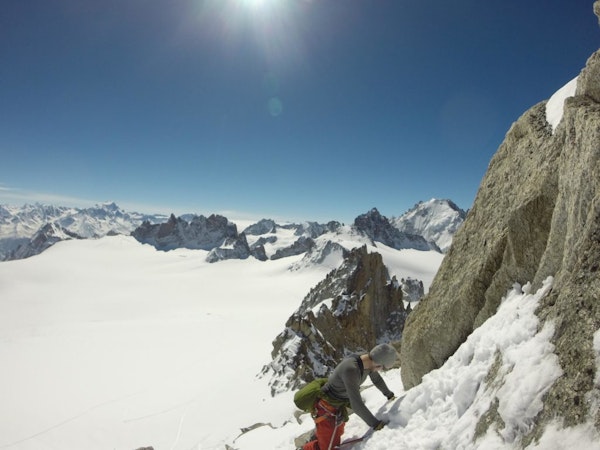
The Aiguille du Tour is one of the easiest peaks to climb in the Alps and is graded as an “F”, meaning easy. The mountaineering skills needed to climb the mountain can be taught the day of or day before by a mountain guide.
Many people use the Aiguille du Tour as a warm up climb before moving on to Mont Blanc, which is a bit more challenging, but also not very technically difficult.
However, it is important to be in good physical condition before beginning the ascent. The climb will involve many consecutive hours of hiking and climbing with gear. For those who are not already in good shape, guides recommend some light endurance and core training prior to arrival.
Climate conditions
The best time of year to summit Aiguille du Tour is between June and September. This is when the climbing conditions are most favorable.
Temperatures are as warm as they get here, but toward the top they will still be below freezing. On the way up you can expect highs of about 6ºC during July and August and about 3ºC during June and September. At the base you will have about 15ºC to 25ºC, depending on the time of year.
The summer months are also when the weather is the calmest. The skies are generally clear and sunny, with average monthly rainfall of less than 75 millimeters. However, due to the mountain’s unique location toward the bottom of the Mont Blanc massif, sudden storms can form quickly and unexpectedly throughout the year.
Equipment
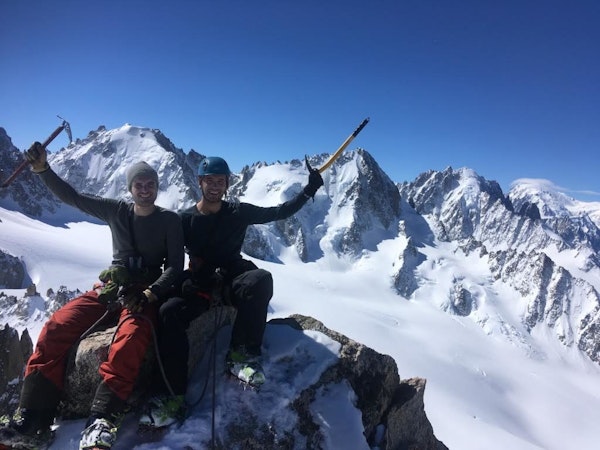
There is not a large amount of equipment required to climb the mountain, but it is always best to come prepared.
The following is equipment that is commonly (but not always) provided by the guide or available to be rented in Chamonix:
Carabiners
Crampons
Harness
Helmet
Ice axe
Rope
The following is usually not included in the trip and should be brought by yourself:
Backpack, about 30 to 50 liters
Camera and extra batteries
Cash and credit card
Gloves, both an outer and inner pair
Head torch or flashlight
High-energy snack
Hiking or mountaineering boots
Light jacket
Mobile phone
Personal first aid kit
Rain gear: both pants and jacket
Sunblock, sunglasses and sun hat
Warm and windproof hat
Water bottles, at least enough for two days of strenuous activity
Winter jacket
Wool socks, at least two pairs
Estimated price
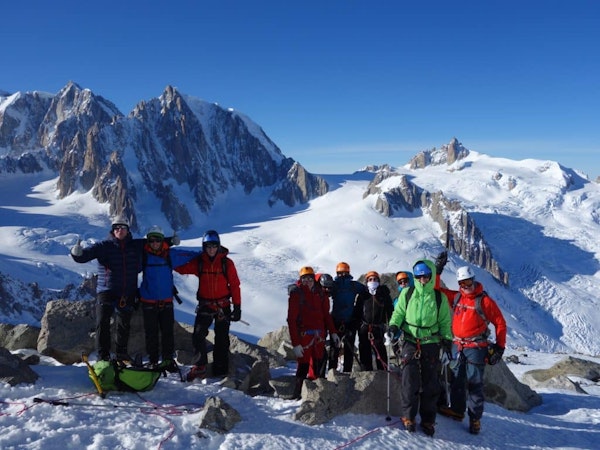
Prices vary from guide to guide and largely depend on your exact itinerary, what is included as well as how many people are participating in the trip.
For just the classic two-day ascent of the Aiguille du Tour, you can expect to pay about €200 to €250 per person for a group of three or four. This same trip is offered at about €800 per person for an individual trip and only includes the guide fee and some personal equipment.
The three day trip option generally costs from €300 per person for a group of four to €1.200 for an individual and includes the guide fee and some equipment as well.
Always be sure to check with your guide for a price quote as each one is different and includes different thing as well.
Other activities in the area
Being located near Chamonix-Mont Blanc, there are no shortage of other outdoor activities to enjoy all around Aiguille du Tour.
During the summer mountaineering other peaks such as Mont Blanc and Gran Paradiso; paralpinism, hiking trips, such as the Tour du Mont Blanc; trail running and rock climbing are all popular and readily available options for outdoor adventurers.
Once summer is gone and winter gets closer, ski touring is also immensely popular and the reason why Chamonix became such a popular location for outdoor adventures in the first place!
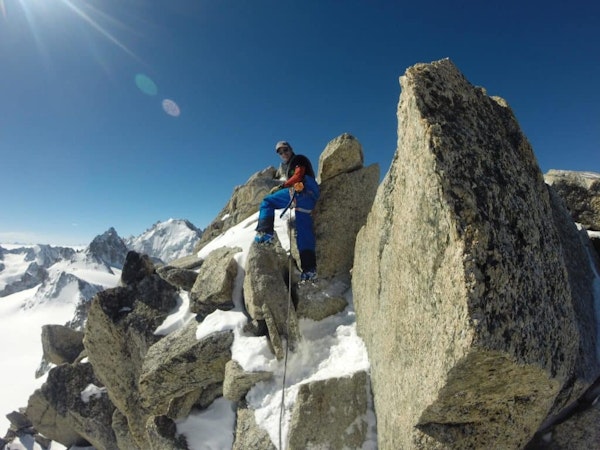
So what are you waiting for? Book a mountaineering expedition to the summit of Aiguille du Tour today and get ready for a truly sublime climbing experience!
